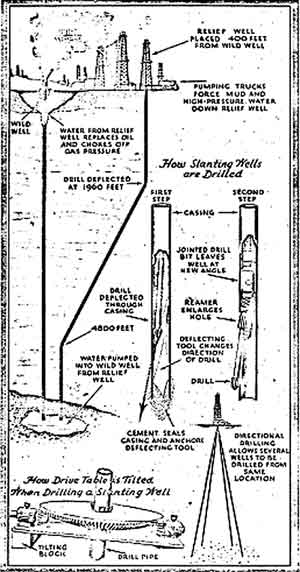H. John Eastman introduces controlled directional drilling in 1929 and was awarded a patent the following year.
The technique became widely adopted after an oil strike in Conroe, Texas, caught fire in January 1933. The well exploded, creating a 600-foot deep crater, and the oil burned for months. Although the fire was eventually put out, oil continued to flow into the “lake.” The only way to manage this was to drill another well to relieve the pressure.
H. John was brought in to drill the relief well, which he did successfully in November 1933 using his technique of directional drilling.
His company grew into a global organization using directional drilling to reach oil under small off-shore islands and other places.
For more information, see: Technology and the “Conroe Crater” at the American Oil & Gas Historical Society



